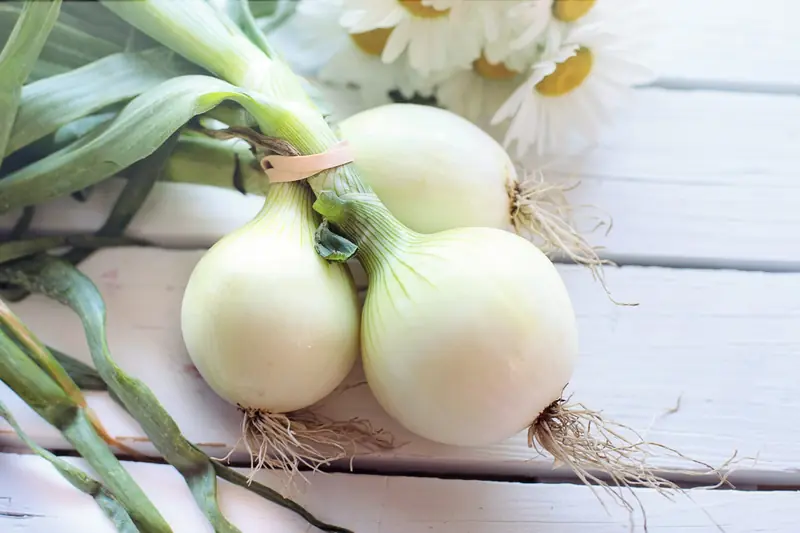
Those who peel it shed tears, while those who consume it find peace. Discover the riddles and benefits of this essential product known worldwide.
Fascinating Geography
Surprisingly, the most widely cultivated crop on the planet isn’t grains, but onions. In 170 countries, the area dedicated to onion cultivation surpasses that of the most productive grain crop—wheat. Yet, only a quarter of the 900 known species of onions grow in gardens (fewer than 230). The remaining three-quarters thrive in forests, meadows, and steppes.
The exact origin of this plant’s cultivation remains a mystery. Ancient wall paintings of onions were discovered in the tomb of the Egyptian pharaoh Tutankhamun. Southwest Asia is likely considered the vegetable’s homeland. Onions were cultivated by the Chinese and Indians 5,000 years ago. It’s known that they were consumed in Europe as far back as the Bronze Age. During the military campaigns of the medieval Crusaders, this vegetable served as a strategic supply: a few onions could be used to pay for the release of a captured knight.
Today, Libya holds the record for onion consumption, with an average resident consuming 33 kilograms per year. Senegal comes in second, with 22 kilograms per person. In Europe, the British lead the way (about 10 kilograms per year), followed by the French (5.5 kilograms per average resident). England is home to the largest onion ever grown, weighing in at 6 kilograms. In Wales, there’s even a holiday dedicated to leeks. On March 1st, during the Middle Ages, a famous battle took place here, where locals attached onion leaves to their helmets as a distinguishing mark of their national army. Since then, onions have become one of Britain’s symbols. The Latin name for onion, Allium, derives from the Celtic word all, meaning “burning.”
Interesting Facts About Onions
- The tears caused by peeling onions are due to a lachrymatory agent found in the tissues that interacts with moisture, including tears. This aggressive compound triggers tears through the formation of sulfuric acid. Experienced chefs often peel onions with a wet knife or a chilled blade.
- An onion and honey mask smooths wrinkles, improves skin tone, and restores shine and strength to hair.
- Onions are named for their resemblance to turnips.
- This vegetable is deadly for cats and dogs, so it should not be included in their diets.
- If you get stung by an insect (wasp, bee, or bumblebee), onion juice can relieve the pain. And that’s not all the fascinating facts worth noting.
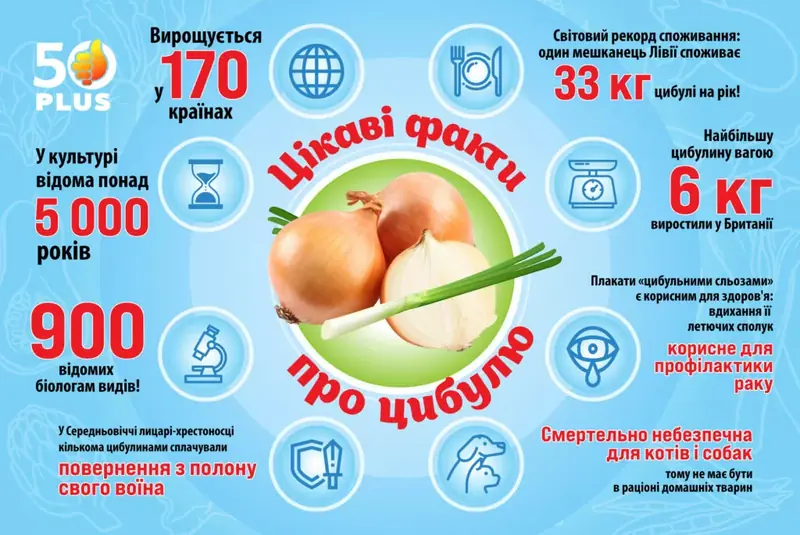
The Benefits of Onions
This vegetable is packed with essential vitamins and minerals: sulfur, phosphorus, magnesium, potassium, calcium, and essential oils. The component glycin in onions helps lower blood sugar levels. Onions have wound-healing, anti-inflammatory, and calming effects.
The benefits of onions in preventing vitamin deficiency, scurvy, boosting immunity, and treating colds are well-documented. Workers in greenhouses where onions and garlic are grown rarely catch the flu or colds. The secret to this resistance to viruses lies in the volatile compounds in onions, similar to those found in coniferous phytoncides. In spring, you can plant onion bulbs in the ground or place them in water on your windowsill to enjoy a vitamin boost right in your kitchen. Green onions are an unbeatable remedy for spring vitamin deficiency. This vitamin-rich source can be a daily healthy addition to salads, soups, and main dishes.
Research has shown that inhaling the volatile compounds released by onions minimizes the risk of developing cancer. To prevent cancer, it’s important to consume onions regularly and not shy away from the eye irritation caused by chopping them. Shedding “onion tears” can actually be beneficial for your health.
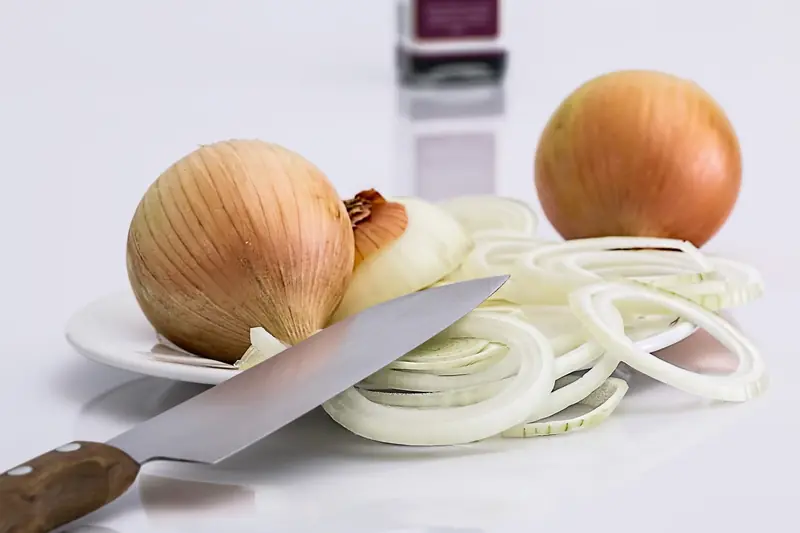
Treating Boils with Onions
You can stop the growth of a boil with a compress. Traditional remedies for treating boils, abscesses, and blisters often include onions.
- Grind an onion in a meat grinder or puree it in a food processor, and apply the onion mixture wrapped in gauze to the inflamed area up to four times a day (cover with plastic wrap and secure for a few hours, replacing it later).
- You can also draw out pus with onion and soap. Add grated household soap to a baked onion in its skin, mix into a homogeneous paste, and apply it on a mature boil using a gauze pad, securing it with a bandage overnight.
- This remedy will dry out the skin and protect against infection. Mix equal parts onion paste and alcohol, apply it to the inflamed area, cover with three layers of gauze, and bandage. Change the mixture three times a day until healed.
Onion Cough Remedies
Chop up ten onions, pour a liter of milk over them, and boil until soft. Add a spoonful of honey and mint juice. Take 1 tablespoon every hour throughout the day.
Another folk remedy can be made by pouring boiling water over a handful of breadcrumbs and adding an onion. Once everything is soaked, drain the water, place the softened bread with the onion in a cotton sock, apply it to your throat, and keep it on your neck until the pain subsides. Use this compress overnight, and soon you won’t even remember you had a cough.
Leeks – Recipes
The delicate flavor and various health benefits of this vegetable, which speeds up metabolism and aids in weight loss, make it popular among home cooks. Let’s prepare it with cream and cheese.
You will need: 600 g of leeks (three pieces), 200 ml of low-fat cream, 2 tablespoons of butter, 50 g of hard cheese, and salt to taste.
These recipes require a skillet that can be placed in the oven (with a removable or metal handle). Preheat the oven to 200 °C. In a skillet, melt the butter and lightly sauté the sliced stems over low heat for 5 minutes. Once they turn golden, pour in the cream, add a pinch of salt, and simmer for a few minutes. Grate the Dutch cheese, sprinkle it over the leeks, and place it in the hot oven for 10 minutes until the dish is golden brown on top. Serve the leeks hot as a side dish or cold as an appetizer.
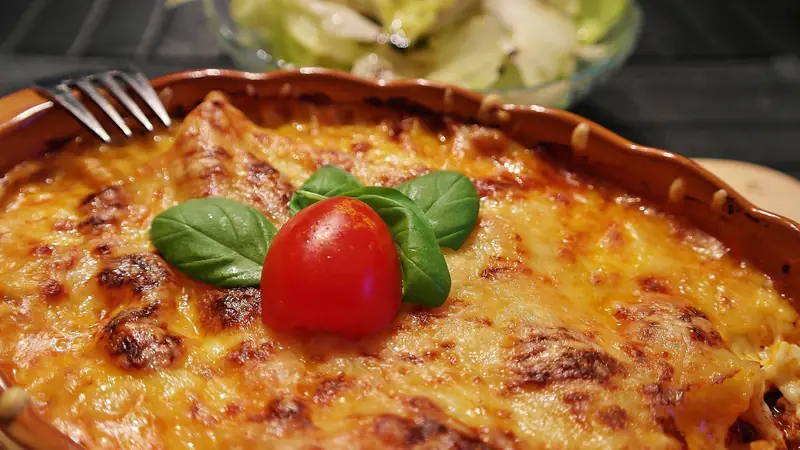
Pickled Onions – Recipe
The marinade will eliminate the sharp smell of the vegetable. For 2 onions, use 3 tablespoons of vinegar (white or balsamic), ½ cup of water, 1 tablespoon of sugar, and a pinch of salt. Recipes with onions may also include bay leaves, cloves, mustard, and peppercorns.
Slice the onions into rings. In a glass jar or enamel pot, pour in hot water, add salt, sugar, and vinegar. Stir, then add the onions and let them steep for a few hours.
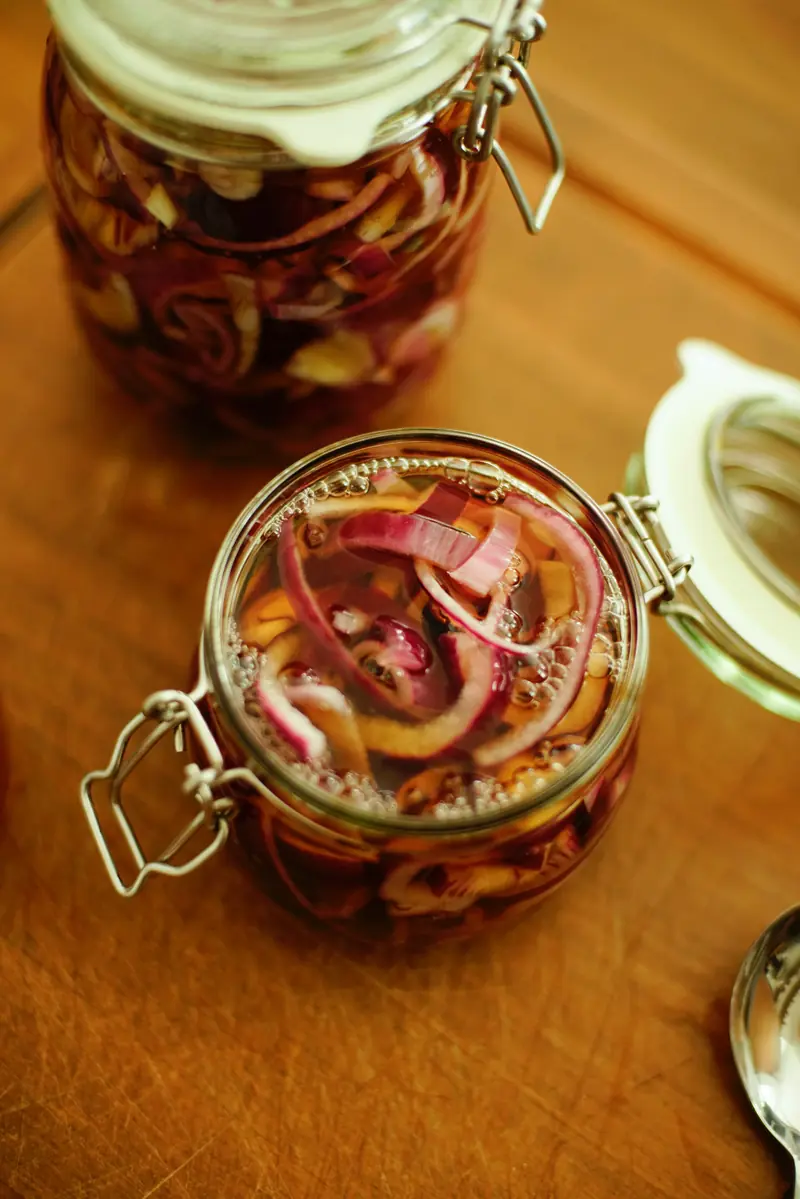
Lecho – Recipe with Carrots and Onions
For 5 onions, use 1.3 kg of peeled bell peppers, 3 kg of tomatoes, 5 carrots, 200 ml of oil, 160 g of sugar, 2 tablespoons of salt, and 4 tablespoons of 9% vinegar.
Chop the tomatoes. Pour them into a pot, adding sugar, salt, and oil. Bring to a boil and cook for 15 minutes. Cut the peppers, onions, and carrots, and add them to the tomato mixture. Simmer on low heat for another half hour after boiling. Finally, add the vinegar. Pack the lecho into sterilized jars and seal. These recipes are especially relevant during the winter preservation season.
Caramelized Onions – Recipe
During cooking, the essential oils from onions evaporate, giving the vegetable a sweet flavor. Despite their natural bitterness when raw, onions are actually sweeter than apples and pears, containing 6% sugar. This is why they caramelize so easily. Simply heat a skillet, coat the bottom with oil, add sliced onions, and sauté them uncovered for 5 minutes, then cover and cook for another 15 minutes. After adding sugar and salt, you can simmer for another 5 minutes, stirring occasionally. Thanks to their “delicious” aroma, recipes with sautéed onions are among the most appetizing.
Quick Green Onion Pie – Recipe
This simple culinary masterpiece requires ordinary ingredients. You will need 200 g of green onions, 400 g of flour, 10 eggs + 1 yolk, 400 ml of kefir, 18 g of baking powder (soda), 30 g of butter, 100 g of mayonnaise, 1 tablespoon each of sour cream and sugar, 2 tablespoons of sesame seeds, 50 g of dill, and salt and pepper to taste.
Recipes for poured pies start with preparing the filling. Finely chop the washed parsley and onions. Hard-boiled eggs should be diced into small cubes. In a deep bowl, combine the greens and eggs. Season with salt and pepper. Pour in the melted butter and mix well.
Next, prepare the batter. Crack the eggs into a bowl, add salt, sugar, and beat until frothy. Add homemade mayonnaise, kefir, baking powder, and sifted flour, mixing until you have a smooth, lump-free batter.
Grease a baking dish with butter, pour in half of the batter, add the filling, and pour the remaining batter on top. Brush the pie with a mixture of yolk and sour cream, and place the dish in a preheated oven at 180 °C for 40 minutes. Once out of the oven, cover the dish with a damp towel to keep the pie from hardening.
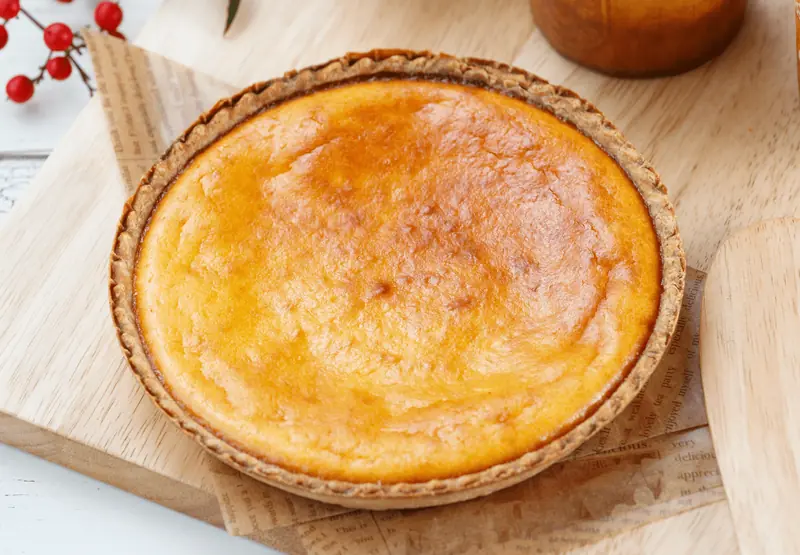
Onion Soup for Slimming
This well-known dietary dish from French cuisine is an effective fat burner.
Ingredients: 4 onions, a spoonful each of meat broth and margarine, 5 tablespoons of flour, and 75 g of cheese.
Sauté the chopped onions in hot oil (covered) for 5 minutes, add flour, sprinkle with grated cheese, pour in the meat broth, stir, and bring to a boil, then simmer for another 5 minutes on low heat.
